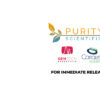With NEAFS starting this week and SOFT imminent, the focus here at GenTech for October (and early November) is forensics and toxicology. In that spirit, we’ve rounded up a few related resources for this week’s Tech Tips.
A review of the resources
The Basics:
For definitions and a basic overview of Forensic Toxicology, check out A Simplified Guide to Forensic Toxicology, from the National Forensic Science Technology Center® (NFSTC), with support from the Bureau of Justice Assistance.
Analytical Instruments Solutions for Forensic Toxicology from Shimadzu, provides an overview of the instruments they offer for applications such as drug screening and quantitation, and heavy metals analysis.
Labs that are moving or growing or remodeling, and certainly startups, could benefit from Forensic Laboratories: Handbook for Facility Planning, Design, Construction, and Moving.
From AAFS & SOFT:
ANSI/ASB STANDARD 152, Standard for the Minimum Content Requirements of Forensic Toxicology Procedures, First Edition, 2021. From the American Academy of Forensic Scientists (AAFS), “this document provides requirements for the minimum content of analytical procedures in forensic toxicology.”
SOFT/AAFS Forensic Toxicology Laboratory Guidelines. Includes specific guidelines for the practice of forensic toxicology for two defined areas: Post-Mortem Forensic Toxicology and Human Performance Forensic Toxicology.
From the NIH/National Library of Medicine:
- Modern Instrumental Methods in Forensic Toxicology. “Two Nobel prizes were awarded for novel MS technologies with applications in forensic toxicology: one to Wolfgang Paul for the quadrupole ion trap mass spectrometer and another to John Fenn for electrospray ionization methods.” This article discusses various instruments (such as GC-MS-MS, GC–Ion Trap MS, LC-MS-MS , etc.) and their respective roles in forensic toxicology analyses.
- Guidelines for the interpretation of analytical toxicology results and unit of measurement conversion factors. R.J. Flanagan, 1998.
From the National Institute of Justice
Naturally, the National Institute of Justice (NIJ) has a plethora of information and resources for students, practitioners and researchers alike.
- Forensic Laboratory Operations.
- Evidence Analysis and Processing. Before there can be processing and analysis, there must be collection and preservation of samples.
- Forensic Science Research and Development.
- Forensic Technology Center of Excellence – Lots of “evidence-based resources about forensic technologies and emerging challenges.”
- Listen to the Justice Today Podcast.
- Report to Congress: Needs Assessment of Forensic Laboratories and Medical Examiner/Coroner Offices
- Watch the webinar, now available on demand, Successful Onboarding in Crime Laboratories.
- From the Forensic Technology Center of Excellence, listen to the Just Science Podcast.
- Human Factors in Forensic Science Practice Sourcebook. A collection of five articles created to “advance the understanding and adoption of insights from cognitive psychology into forensic practice.” Each article “is intended to address a specific field of knowledge within the cognitive psychology literature and how it may apply to and strengthen forensic science.” (Download as pdf here.)
- View the archived webinar: ASCLD Train the Director Series | Toxicology: Instrumentation, Methodology, and Workflows. “This presentation discusses advances and the logistics of transitioning from the legacy workflows of multiple serial analyses to parallel LC/MS/MS and QTOF methods.”
From GenTech:
Final Thoughts:
Get your toxicology lab up and running quickly and efficiently with our Startup Toxicology Package.
Visit us at Booth 19 at NEAFS, October 19-20, and at SOFT, November 1-4 at Booth 314.






